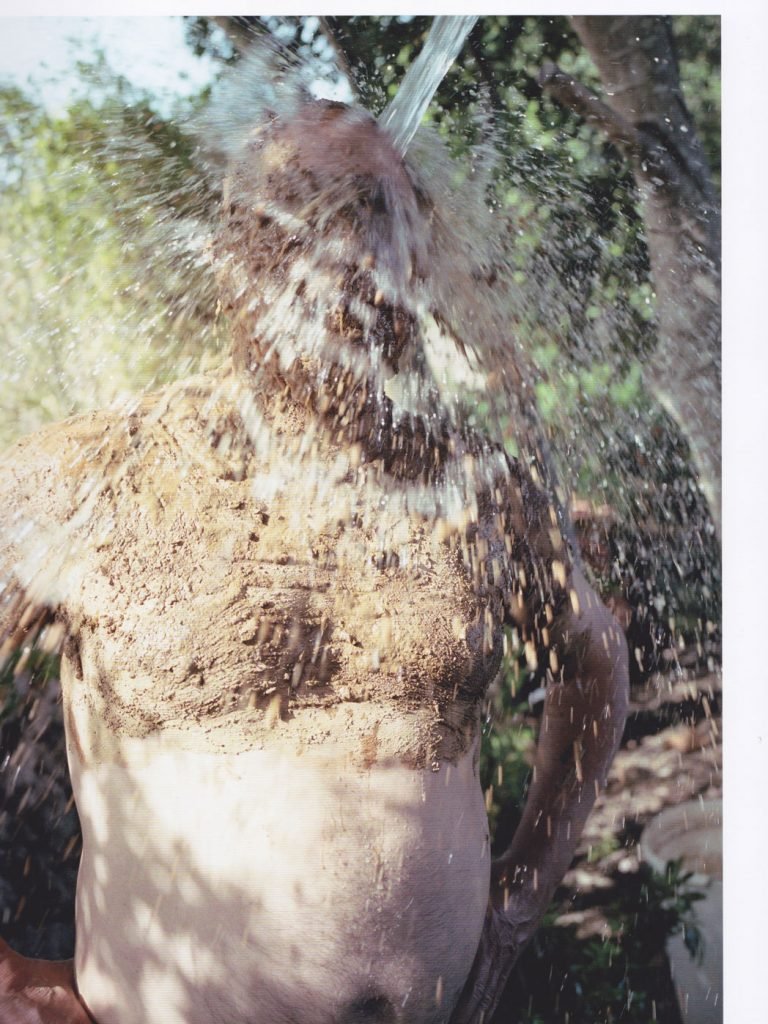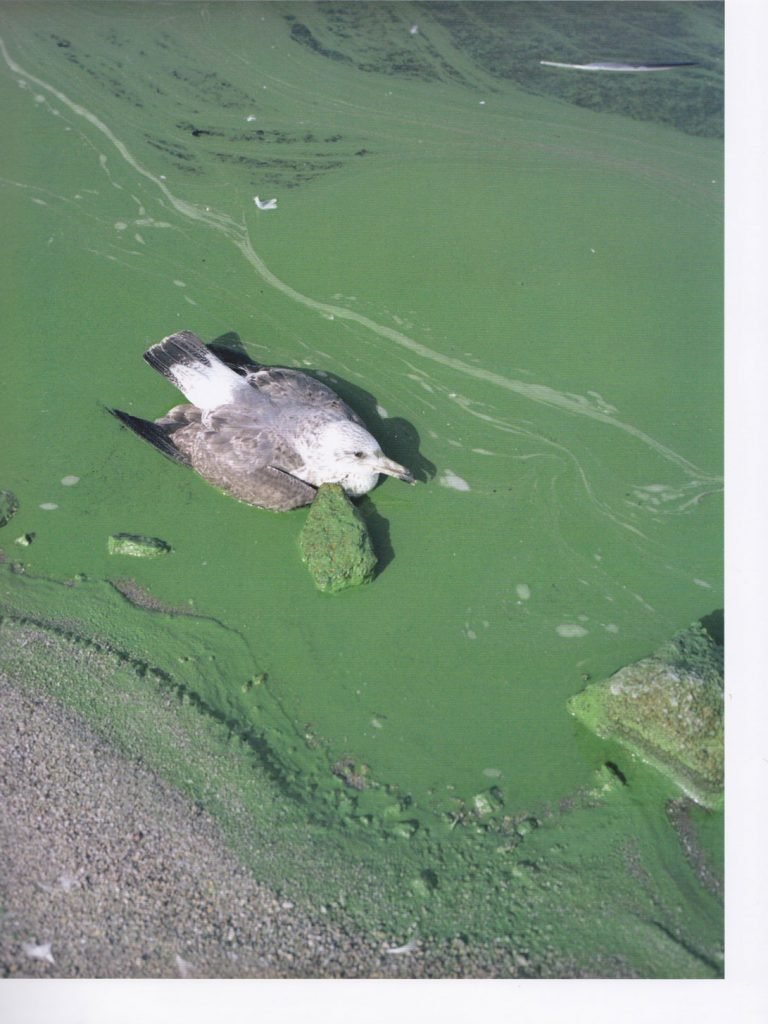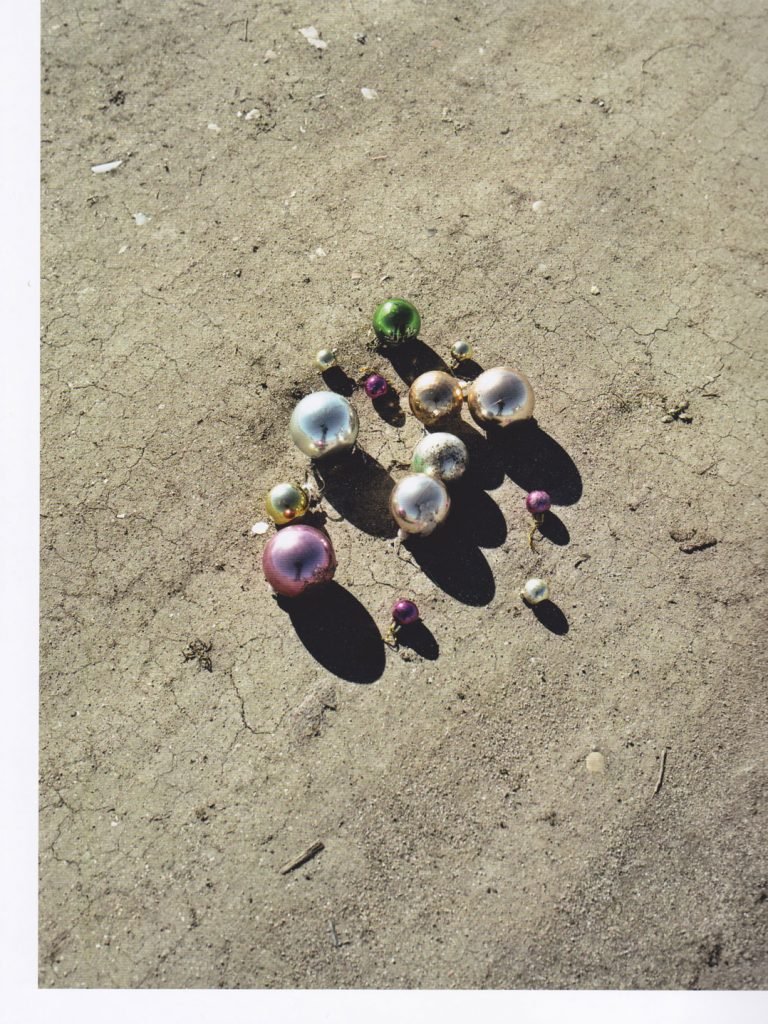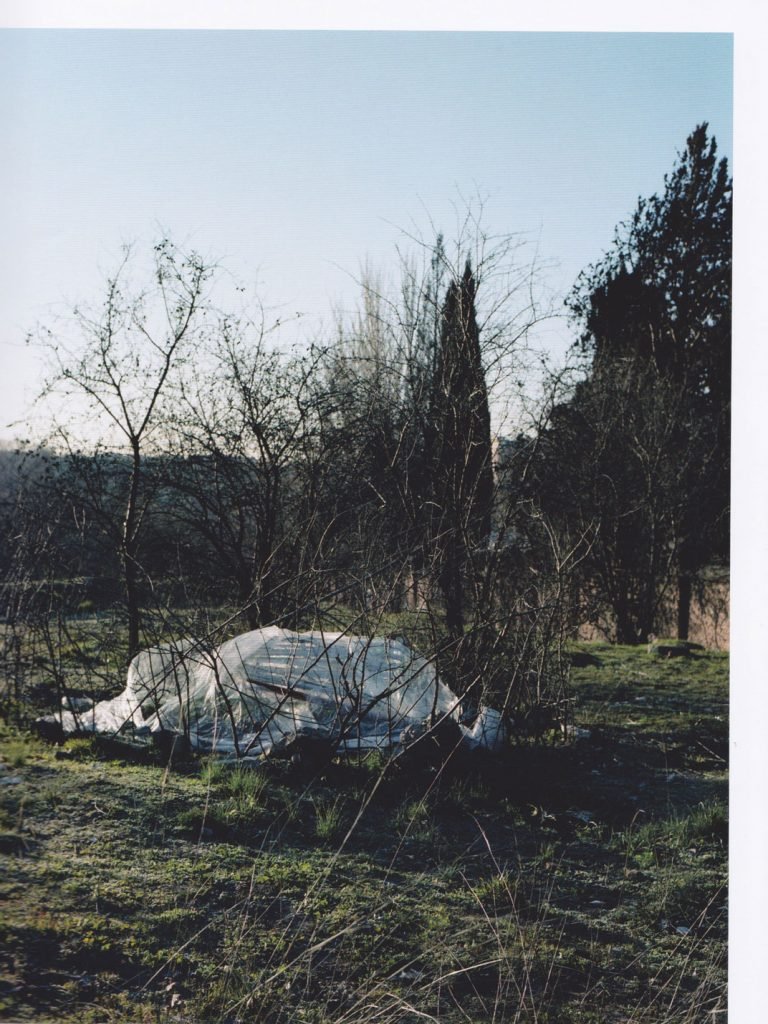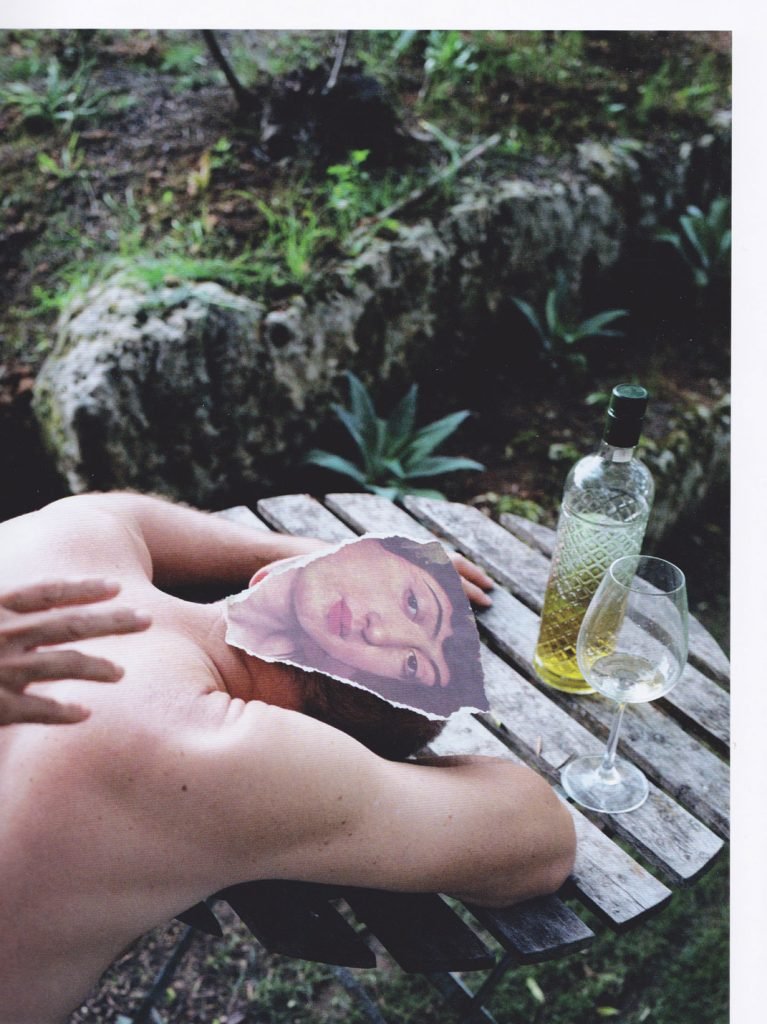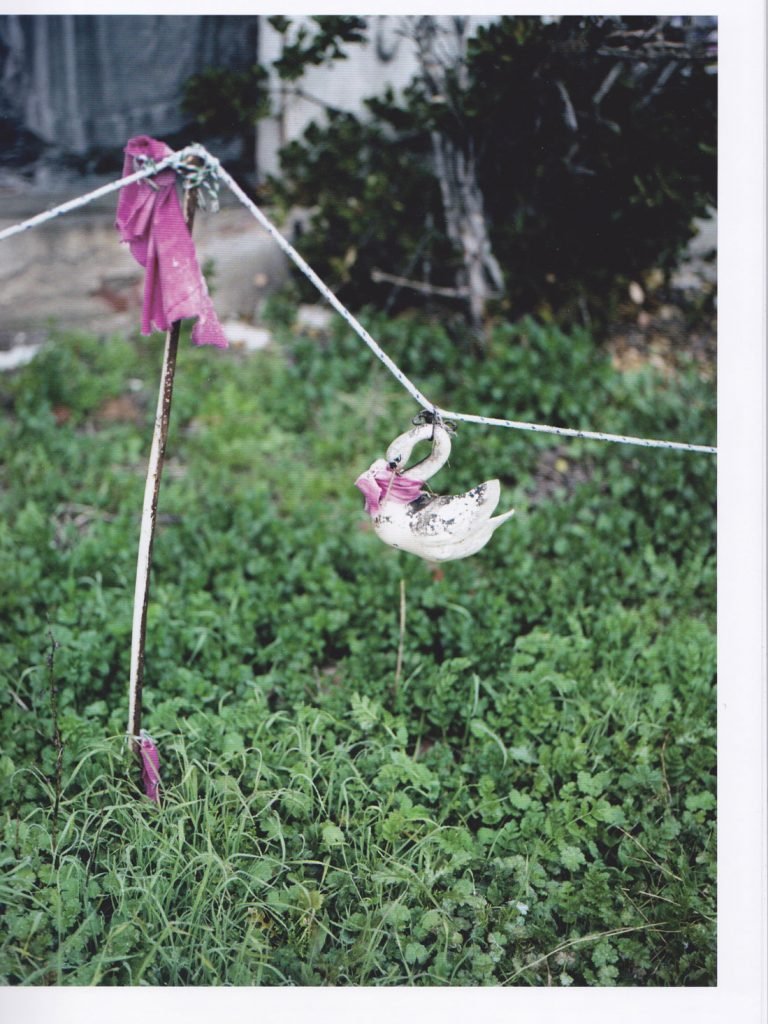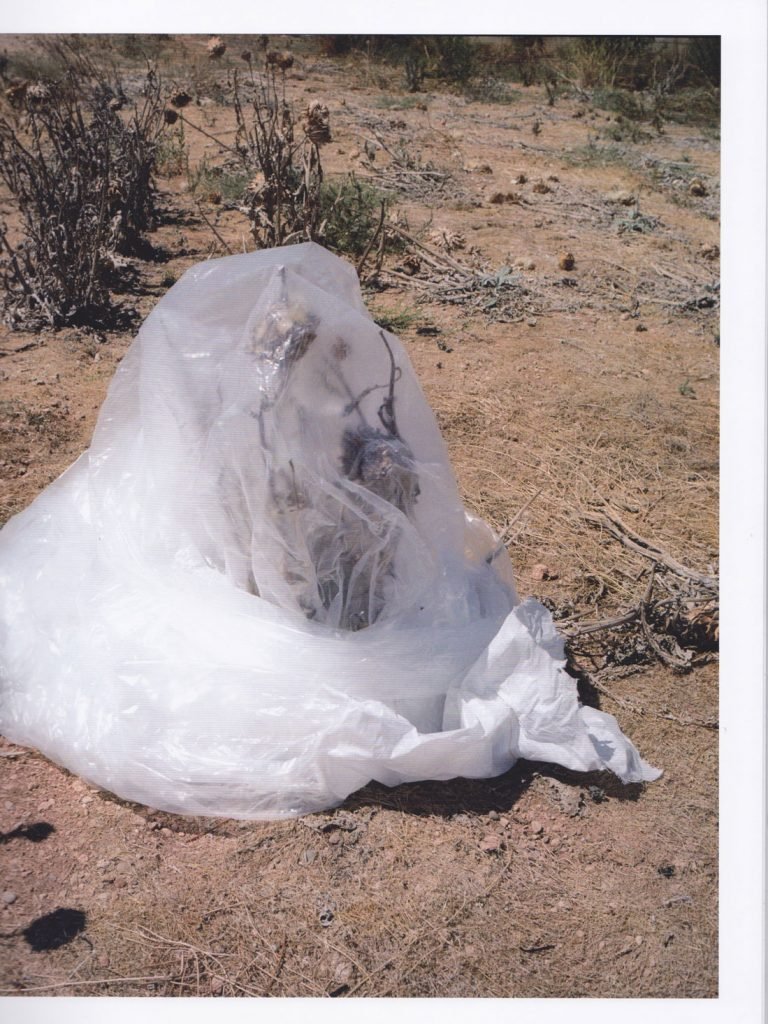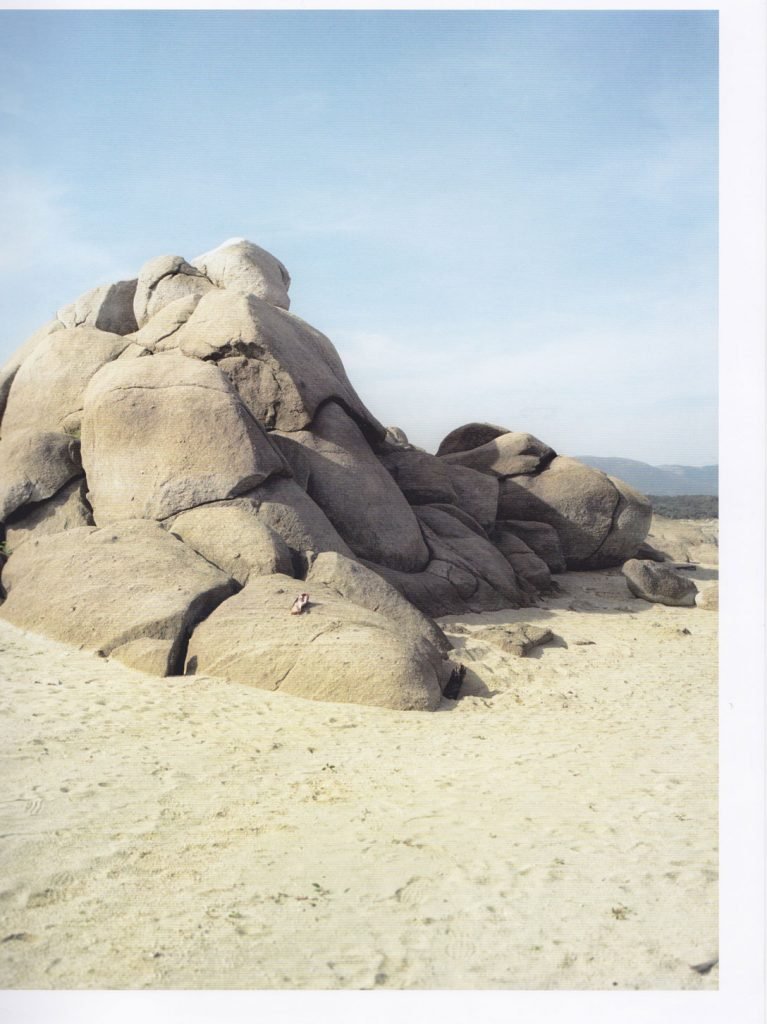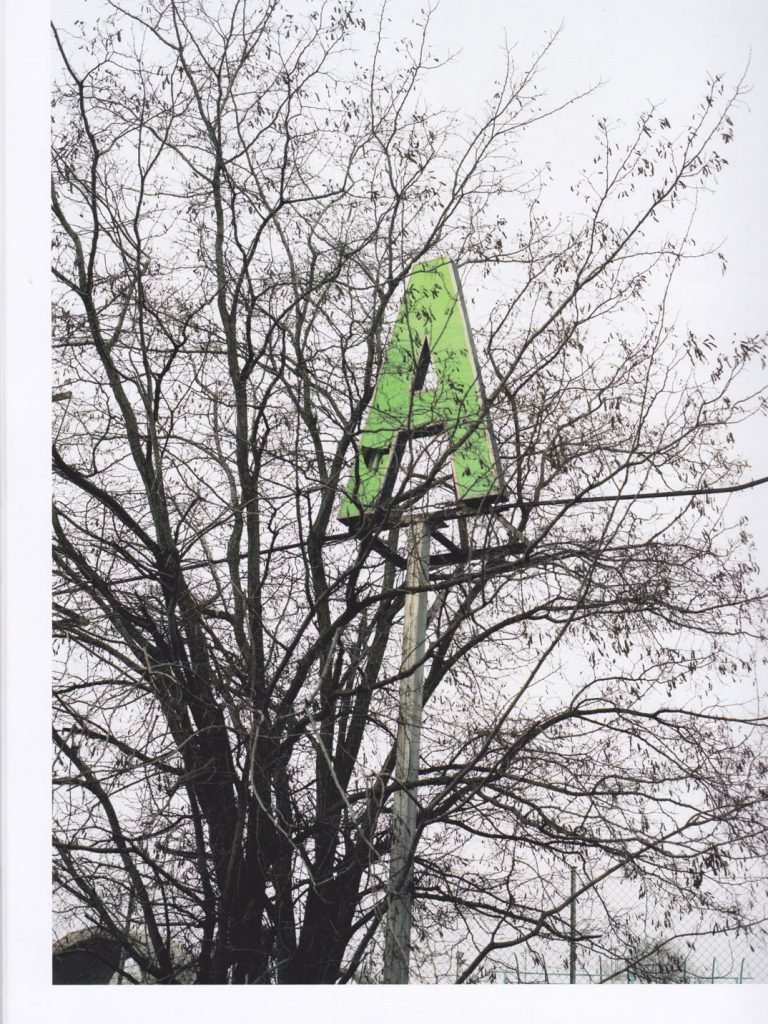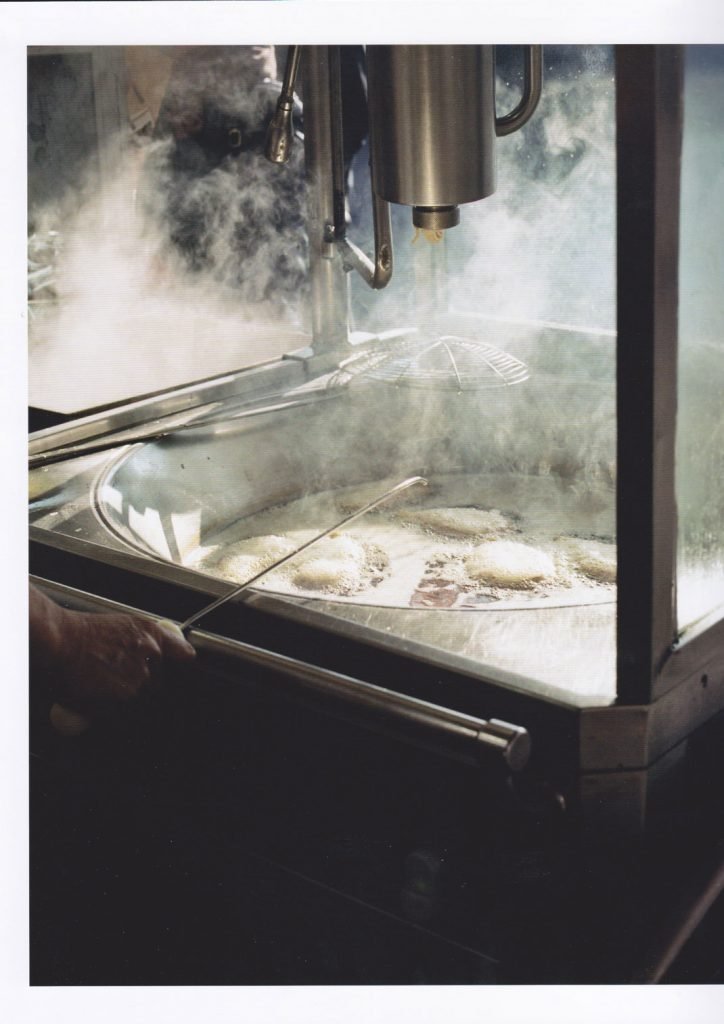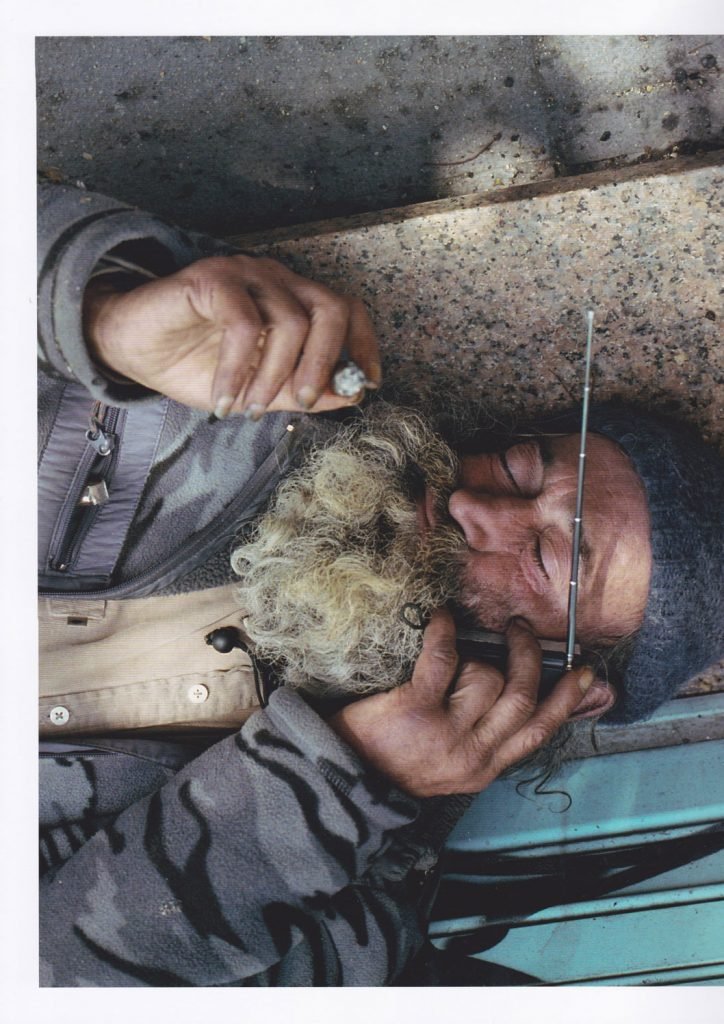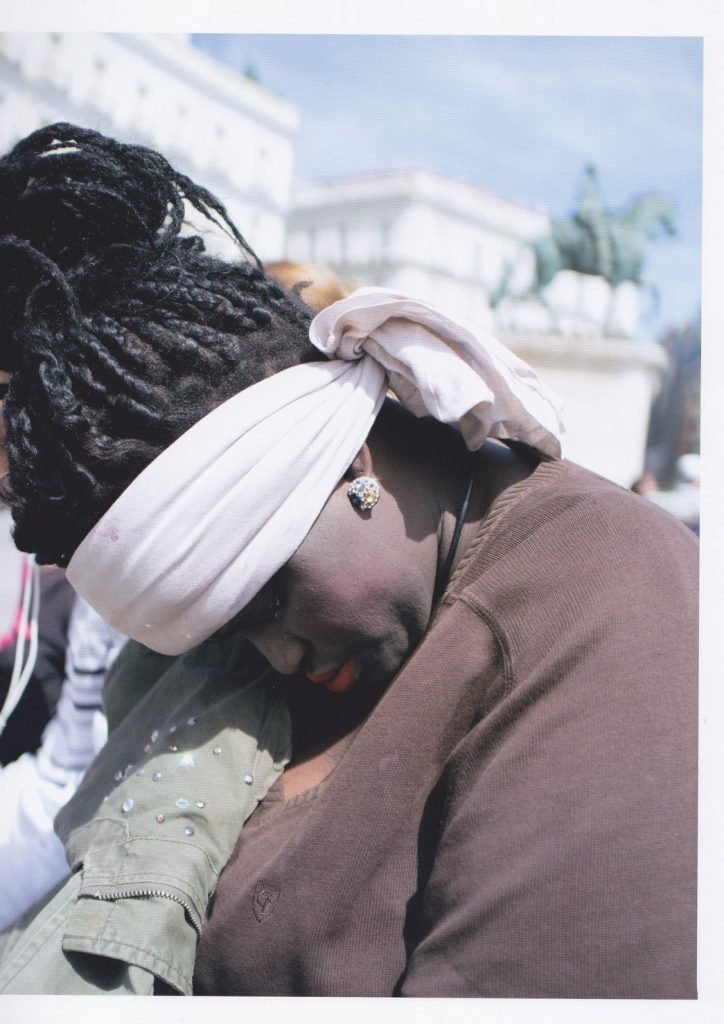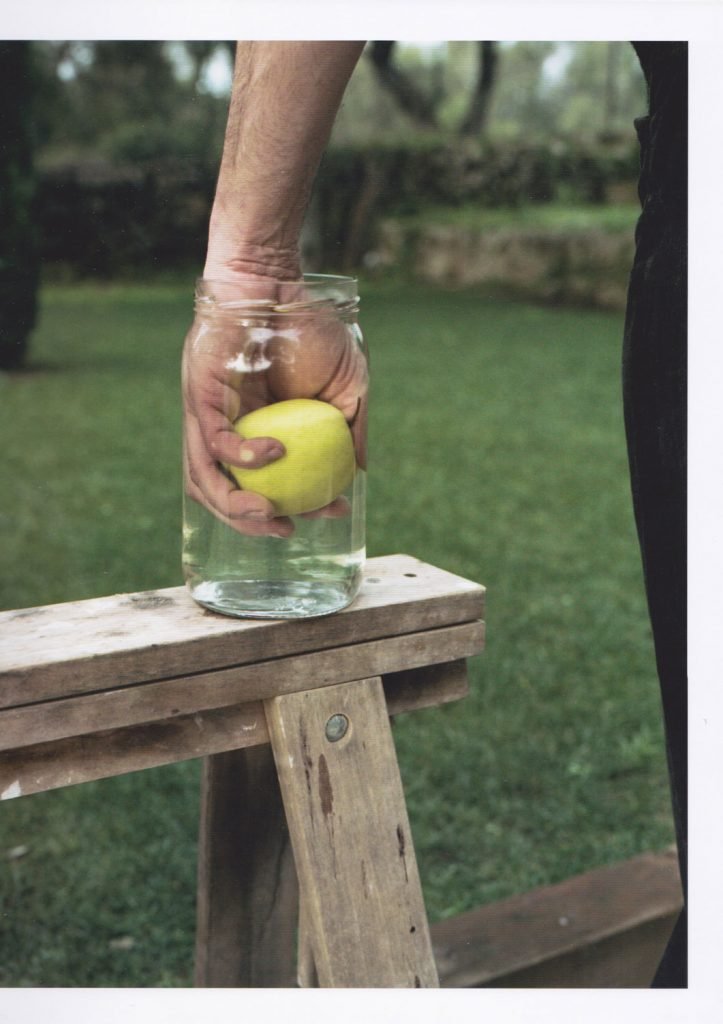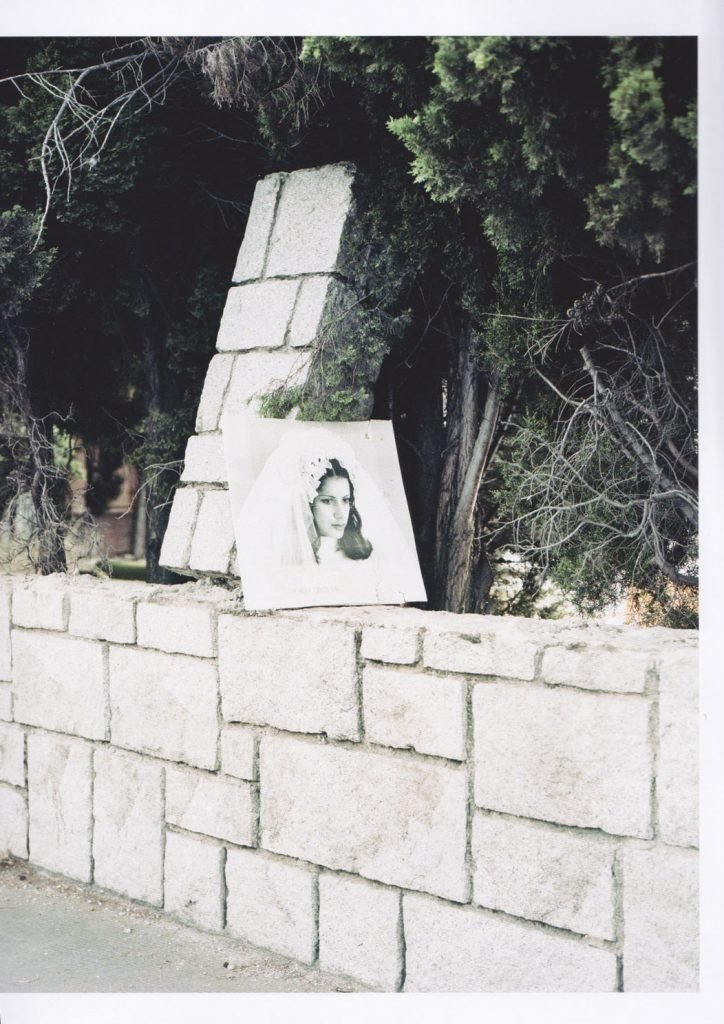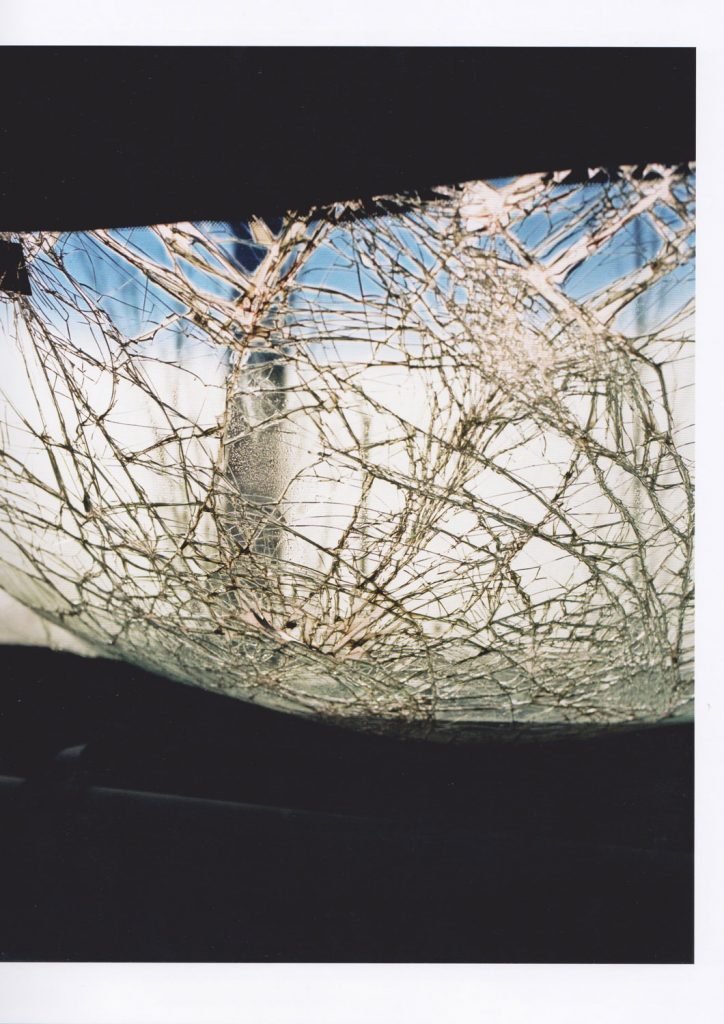An old chair is swallowed by poppies. There’s nothing you can do about it, they grow inside it too, the chair is completely broken down, it’s just an empty skeleton devoured by red flowers.
A yellow bag hangs from a branch and contains a mystery that fascinates us, give us horror and then it fascinates us again.
A boy doing a handstand on the streets of a city showing us only his bare and deformed feet. At the same time, specularly, the double severed trunk of a tree appears. The two images communicate with each other, they are, after all, the same thing squat and mutilated; both shaped by the violence of the time, by the experience that marked them, which they secretly tell. One in the middle of the city, the other in the silence of a wood. They are parallel worlds, those told by Ramirez-Suassi, and are always kept in touch by a mysterious thread: traces of the passage of man and of other life forms even in the most desolate and abandoned places, they are traces that seem almost contaminate these places with the precariousness of their existences, increasing that disquieting feeling of being in front of a scene that precedes or follows a catastrophic event.
JM Ramirez-Suassi (1970) was born in Mallorca (Spain), and now lives and works in Madrid. His work occupies an ambiguous position somewhere between portraiture and social landscape, involving multiple visits to the same locations to observe the change year after year.

